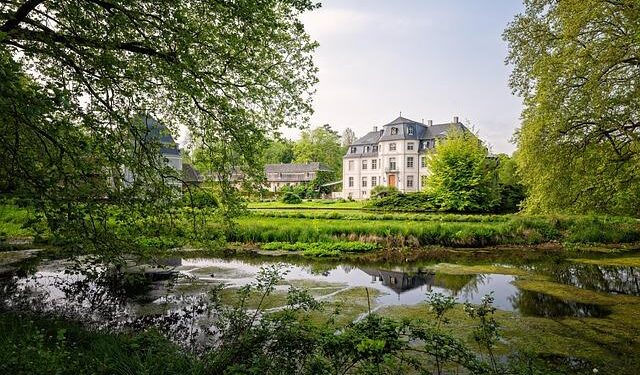LensToLens: Wetlands Guard Bird Species from Plateau to Urban Landscape – Xinhua
Wetlands play a crucial role in preserving bird biodiversity across diverse environments, from remote plateaus to bustling urban areas. In a recent feature, Xinhua highlights the vital function these fragile ecosystems serve as natural sanctuaries for myriad bird species, underscoring the importance of wetland conservation amid expanding human development. The report delves into how wetlands act as critical habitats and ecological buffers, safeguarding avian populations against environmental pressures and habitat loss.
LensToLens Explores How Wetlands Protect Bird Species Across Diverse Landscapes
From the vast plateaus of the Tibetan Plateau to bustling urban wetlands, LensToLens reveals the vital ecological roles these habitats play in sustaining diverse bird populations. By capturing striking visuals across contrasting environments, the project highlights how wetlands act as crucial sanctuaries, providing food, nesting sites, and stopover points for migratory birds. Their conservation emerges as an indispensable element in safeguarding avian biodiversity against accelerating environmental changes and urbanization.
Key findings emphasize the interplay between natural and man-made wetlands, demonstrating that:
- Plateau wetlands serve as breeding grounds for rare and endemic species, thriving in pristine, elevated ecosystems.
- Urban wetlands offer critical refuges where birds adapt to human impacts while maintaining essential ecological functions.
- The connectivity between these landscapes facilitates diverse bird migration pathways, ensuring population resilience.
| Wetland Type | Dominant Bird Species | Primary Ecological Role |
|---|---|---|
| Plateau Wetlands | Tibetan Snowcock, Black-necked Crane | Breeding & Nesting |
| Urban Wetlands | Mallard, Common Kingfisher | Foraging & Migratory Stopover |
| Coastal Wetlands | Grey Heron, Eurasian Curlew | Roosting & Feeding |
The Critical Role of Wetlands in Sustaining Avian Biodiversity from Plateaus to Cities
Wetlands serve as vital refuges for a diverse array of bird species, bridging the ecological gap between remote plateaus and bustling urban centers. These ecosystems provide essential breeding grounds, feeding habitats, and stopover points during migration, making them irreplaceable havens for avian populations facing habitat fragmentation and climate challenges. In plateaus, where harsh conditions limit biodiversity, wetlands create microhabitats that sustain endemic and migratory birds alike, supporting species survival year-round.
Urban wetlands are increasingly recognized as green lungs amidst concrete sprawl, offering birds shelter and resources otherwise scarce in city landscapes. Their presence contributes to ecological balance, mitigates pollution, and supports birdwatching tourism, which benefits local economies. Key benefits of wetlands for birds include:
- Nutrient-rich environments: Abundant aquatic plants and invertebrates feed diverse bird diets.
- Safe nesting sites: Dense vegetation protects nests from predators and human disturbance.
- Migration stopovers: Rest and refueling areas critical for long-distance travelers.
| Wetland Type | Primary Bird Species Supported | Key Ecological Function |
|---|---|---|
| High-Altitude Marshes | Bar-headed Goose, Brown-headed Gull | Breeding habitat and oxygen-rich waters |
| Urban Ponds and Lakes | Common Coot, Black-headed Gull | Feeding grounds and flocking sites |
| Coastal Estuaries | Sandpipers, Herons | Nursery areas and nutrient cycling |
Experts Call for Strengthened Wetland Conservation Policies to Safeguard Urban and Rural Bird Habitats
Conservationists emphasize the urgent need for reinforced policies to protect wetlands, which serve as critical havens for a diverse range of bird species spanning from remote plateaus to bustling urban environments. These habitats not only provide essential breeding and nesting grounds but also support migratory corridors crucial for the survival of many avian populations. Experts warn that unchecked urban expansion and agricultural encroachment could lead to irreversible degradation of these ecosystems, threatening biodiversity and disrupting ecological balance.
Key recommendations from leading ornithologists and environmentalists include:
- Implementing stronger legal frameworks to regulate land-use changes around wetlands.
- Enhancing restoration projects that target polluted and drained wetland areas.
- Promoting community-based stewardship programs that engage local populations in monitoring and maintenance.
- Integrating wetland conservation into urban planning to ensure coexistence between development and nature.
| Threat | Impact on Birds | Suggested Action |
|---|---|---|
| Urban Sprawl | Habitat loss and fragmentation | Smart zoning and green corridors |
| Agricultural Runoff | Water pollution affecting food sources | Buffer zones and pollution controls |
| Climate Change | Altered migration patterns | Adaptive habitat management |
Key Takeaways
As efforts to preserve wetlands gain momentum, initiatives like LensToLens highlight the crucial role these ecosystems play in safeguarding bird species across diverse environments-from remote plateaus to bustling urban landscapes. By fostering greater awareness and promoting sustainable stewardship, such projects not only protect biodiversity but also reinforce the intrinsic connection between natural habitats and human communities. Continued attention and support will be essential to ensure that wetlands remain vibrant sanctuaries for avian life amid the challenges of development and climate change.













